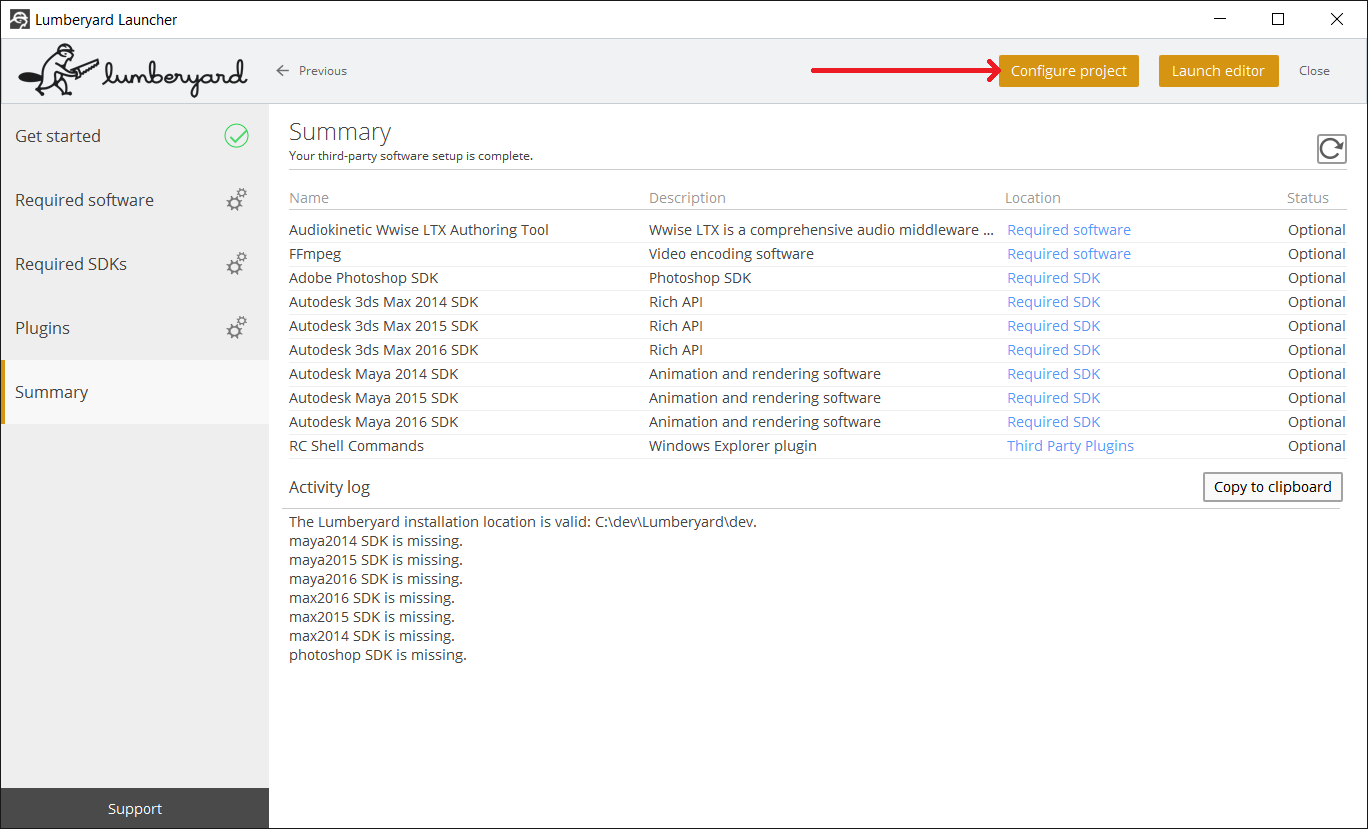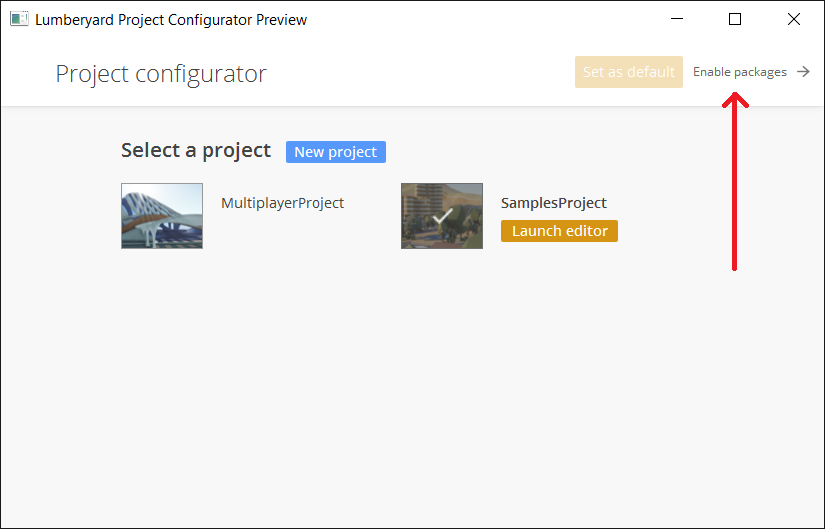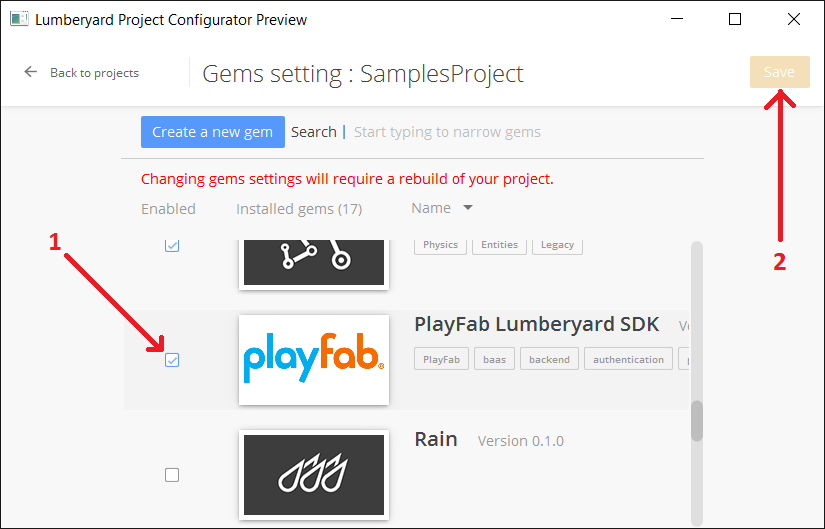Welcome to the PlayFab Amazon Lumberyard SDK.
- Best Build: https://github.com/PlayFab/LumberyardSDK/releases/tag/0.0.160712
- Works for the original launch, Lumberyard 1.0
- This Build: Built for Amazon Lumberyard 1.3 Beta
- Lumberyard is still in beta, and we have experienced some build issues with version 1.3. As such, this repo is provided as-is, and may include errors. If you experience issues with Lumberyard, please contact Lumberyard support. If you find specific errors in our SDK, feel free to submit a pull request which resolves the issue.
None of this will work for the latest Lumberyard, 1.9. The best option today, for Lumberyard 1.9 is to use: http://docs.aws.amazon.com/lumberyard/latest/userguide/gems-system-gem-aws.html plus our LuaSdk: https://github.com/PlayFab/LuaSdk. This combination will eventually be an official SDK, but for now you'll need to put the combination together yourself.
Please post any PlayFab related questions on our Forums.
This document describes the PlayFabSdk Lumberyard Gem, and usage.
The Lumberyard SDK will give you the ability to call any public PlayFab API from a Lumberyard project.
The PlayFab platform runs on AWS, and PlayFab has express permission from Amazon to provide services for Lumberyard.
- Install Lumberyard: https://aws.amazon.com/lumberyard/downloads/
- Fully unpacked and installed, Lumberyard will need at least 50-80 gigabytes of space
- This does not include the files specific to your project, which may be 5-20 additional gigabytes (or more, depending on your project)
- The PlayFab SDK adds approximately 1 mb
- Follow the instructions on acceptable directory requirements for your Lumberyard install location: {LumberyardLocation}
- Install Visual Studio (2013 or 2015)
- Follow the Lumberyard setup instructions here: https://gamedev.amazon.com/forums/tutorials
- Specifically "Installing and Configuring Lumberyard"
- PlayFab does not specifically require any art, animation, or video editing programs, however it is very likely that you will need them to make your game.
- All other plugins, sdks, and other mandatory software is probably required
- Follow the "Programming" series of tutorials to set up your Lumberyard environment (halfway down the page, search for "Programming")
- https://gamedev.amazon.com/forums/tutorials
Users should be very familiar with the topics covered in our getting started guide. To connect to the PlayFab service, your machine must be running TLS v1.2 or better.
- For Windows, this means Windows 7 and above
- Official Microsoft Documentation
- Support for SSL/TLS protocols on Windows
- To build a Client: use the PlayFabClientSDK.
- To build a Server: If your game-server is a separate stand-alone console application, it is possible to use the C++ WindowsSDK. If your game-server requires a fully-loaded Lumberyard environment, you can also use the PlayFabServerSDK provided with in the Lumberyard SDK. Do not mix the client/server/combo files, or your project may not compile.
- To build a Client / Server hybrid: Create two separate projects, and install each gem separately. Do not publish any project containing your DeveloperSecretKey - For security reasons you must never expose this value to players
- Download and extract the Lumberyard SDK to a temporary folder: {tempPlayFabSdkLocation}
- Copy/Paste the {tempPlayFabSdkLocation}/PlayFabClientSdk folder into your lumberyard project, specifically to: {LumberyardLocation}/dev/Gems/PlayFabClientSdk
- Rename {LumberyardLocation}/dev/Gems/PlayFabClientSdk to {LumberyardLocation}/dev/Gems/PlayFabSdk
- Follow these screenshots to configure lumberyard to include the PlayFabSdk Gem
*
 *
*  *
* 
- [Optional] Expert Setup * In windows, instead of copying the sdk, you can use a directory symbolic link, with the mklink windows command * git clone the PlayFab LumberyardSdk directly from GitHub to a permanent folder: {permPlayFabSdkLocation} * mklink /D {LumberyardLocation}\dev\Gems\PlayFabSdk {permPlayFabSdkLocation}\PlayFabClientSdk * (You must have administrator access on your machine) * This will make it easier to integrate future PlayFab updates
If you create your own Gem, you can access PlayFab by adding a Gem-dependency in your gem.json file.
- Navigate to: {LumberyardLocation}/dev/Gems/{YourGem}/gem.json
- Use this guide to add a dependency to PlayFab: http://docs.aws.amazon.com/lumberyard/latest/userguide/gems-system.html
- Example:
"Dependencies": [
{
"Uuid": "9a81e5573c13455b850560486e4e7d05",
"VersionConstraints": [ ">=0.0.160302" ],
"_comment": "PlayFab Lumberyard Gem"
}
]
- A working example can be found here: https://github.com/PlayFab/LumberyardSDK/blob/master/TestGemClient/gem.json
This sdk includes an optional flow node that is used by PlayFab to verify sdk features are fully functional.
Please read about the testTitleData.json format, and purpose here:
- https://github.com/PlayFab/SDKGenerator/blob/master/JenkinsConsoleUtility/testTitleData.md It is read from the hard-coded loction of: TEST_TITLE_DATA_LOC in PlayFabApiTestNode.cpp, you can redirect this to an input that matches your file location
In the future, if you update your PlayFabSdk to a new version, Lumberyard may crash on startup. Rerun the "Follow these screenshots to configure lumberyard to include the PlayFabSdk Gem" steps to resolve the issue
For a complete list of available APIs, check out the online documentation.
We love to hear from our developer community! Do you have ideas on how we can make our products and services better?
Our Developer Success Team can assist with answering any questions as well as process any feedback you have about PlayFab services.
Forums, Support and Knowledge Base
Apache License -- Version 2.0, January 2004 http://www.apache.org/licenses/
Full details available within the LICENSE file.